40 Best Places to Visit in Summer in India
Summer in India is a time when most parts of the country experience rising temperatures, but it also opens the door to some of the...
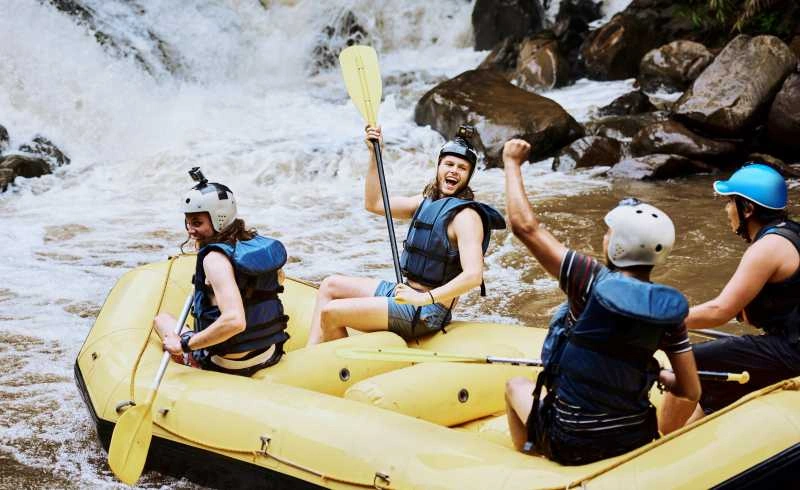
India is a land of incredible diversity from ancient temples and royal palaces to serene backwaters and snow-clad mountains. Most of the global travelers associate India with the grand Taj Mahal but there is so much more to India that travelers miss out on, if they are not informed well enough. Starting from the northern point of India, you will be welcomed by the mountains, led through beautiful valleys and hamlets, eventually entering the spiritual and cultural heart of India. Every corner in India has a cultural gem wrapped in surprise that will leave you awestruck as you move through the length and breadth of the country.
Whether you’re a history lover, adventure seeker, or culture enthusiast, there are endless things to do in India that promise memories for a lifetime. As you plan your next trip, here are the top 10 places to go in India and must-see things in India that define the country’s vibrant spirit and beauty.
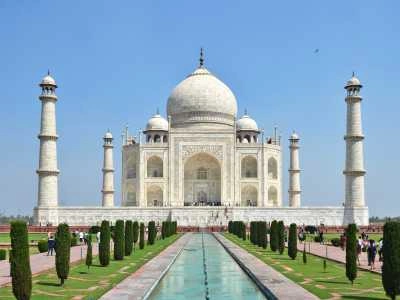
No list of must-see things in India is complete without the Taj Mahal, one of the Seven Wonders of the World and a UNESCO World Heritage Site. This white marble masterpiece, built by Emperor Shah Jahan in memory of his beloved wife Mumtaz Mahal, stands as an enduring symbol of love and devotion. Constructed between 1631 and 1648, the Taj reflects a perfect blend of Persian, Islamic, and Indian architectural styles.
The monument’s symmetry, inlaid semi-precious stones, intricate marble carvings, and the surrounding lush Mughal gardens make it one of the most photographed landmarks in the world. The Taj Mahal is especially breathtaking at sunrise, when the first rays of light paint it in shades of pink and gold, and at full moon nights, when it glows ethereally under the silver light.
Don’t miss a stroll through the Mehtab Bagh (Moonlight Garden) across the Yamuna River; it offers a quieter, equally spectacular view of the monument. The Taj Museum, located within the complex, showcases Mughal artifacts, royal manuscripts, and original calligraphy samples that add depth to the story behind its construction.
Best time to visit: October – March (pleasant weather for sightseeing)
Visiting hours: 6:00 AM – 6:30 PM (closed on Fridays)
How to reach: Agra is around 200 km from Delhi. The fastest route is the Gatimaan Express (1 hour 40 minutes), or a 3.5-hour drive via the Yamuna Expressway.
Entry fees: ₹50 (Indians), ₹1,100 (foreigners); additional ₹200 for main mausoleum access.
Interesting insight: The Taj Mahal is said to appear pinkish at sunrise, milky white in the day, and golden under moonlight, symbolizing the changing moods of Mumtaz, and the timeless nature of love.
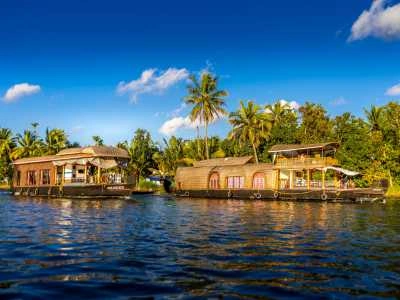
A houseboat cruise through Kerala’s backwaters is among the most tranquil and romantic things to do in India. Imagine gliding gently along emerald waters surrounded by swaying coconut palms, lush paddy fields, and sleepy villages; all while the rhythm of nature sets the pace.
The Kerala backwaters, an intricate network of lagoons, lakes, and canals, stretch across Alleppey (Alappuzha), Kumarakom, and Kollam. Traditional kettuvallams (rice barges), once used to ferry rice and spices, are now transformed into floating luxury villas equipped with cozy bedrooms, open decks, and onboard chefs serving authentic Kerala cuisine.
Along the way, you can watch fishermen casting nets, children waving from the banks, and temple bells echoing across the water. A sunset cruise on Vembanad Lake or an overnight stay on a houseboat under a starlit sky are truly unforgettable experiences that offer a glimpse into Kerala’s serene soul.
Best time to visit: November – February (cool, dry, and perfect for cruising)
Cruise timings:
Average cost: ₹8,000–₹15,000 per night for deluxe houseboats; luxury ones may go up to ₹25,000.
Interesting insight: Some backwater villages can only be reached by boat, creating a world where life moves entirely on water. This unique ecosystem even hosts the Nehru Trophy Snake Boat Race, held every August, attracting global visitors.
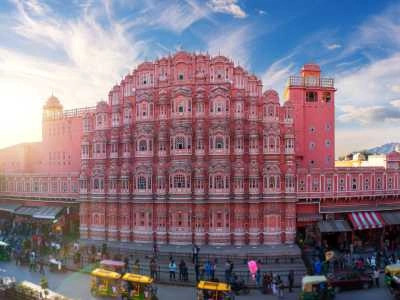
Welcome to Jaipur, the flamboyant capital of Rajasthan, where royal palaces, ancient forts, and bustling bazaars tell tales of valor and elegance. Known as the Pink City, Jaipur earned its name when its buildings were painted terracotta pink in 1876 to honor Prince Albert’s visit; the color signifying hospitality and warmth.
Start your exploration at the Amber Fort, a UNESCO World Heritage Site, perched on a hill overlooking Maota Lake. Its Sheesh Mahal (Mirror Palace), where a single candle can illuminate the room with countless reflections, showcases the brilliance of Rajput craftsmanship. Next, visit the City Palace, still partially occupied by the royal family, and home to museums displaying royal costumes, weaponry, and paintings.
Don’t miss the Hawa Mahal (Palace of Winds), its ornate façade of 953 small windows allowed royal women to observe street festivals unseen. Just nearby lies the Jantar Mantar, an astronomical observatory built by Maharaja Jai Singh II, featuring the world’s largest stone sundial.
End your day by browsing through Johari Bazaar for colorful textiles, gemstones, and handcrafted jewelry, or dine on Rajasthani thalis while folk musicians play under the desert sky.
Best time to visit: October – March (pleasant days for sightseeing)
Visiting hours: 9:00 AM – 5:00 PM (for most forts, palaces, and museums)
How to reach: Jaipur International Airport (JAI) connects to all major Indian cities. It’s also easily accessible by train or a 5-hour drive from Delhi via NH48 (280 km).
Average entry fees: ₹200–₹500 for major attractions.
Interesting insight: Jaipur is India’s first planned city, designed according to the ancient Vastu Shastra principles, with wide boulevards and a grid-like pattern that reflects cosmic harmony.

For adventure seekers, trekking through the Himalayas in Himachal Pradesh ranks among the most thrilling and fun things to do in India. The state’s dramatic landscapes, snow-capped peaks, alpine meadows, and glacial streams, offer some of the best trekking routes in the country. From easy beginner trails to challenging high-altitude climbs, Himachal is a paradise for trekkers.
Popular trails include the Triund Trek near Dharamshala, perfect for beginners with stunning views of the Dhauladhar range; the Hampta Pass Trek, which connects the lush Kullu Valley to the stark Lahaul Valley; and the Kheerganga Trek in Parvati Valley, famous for its hot water springs and mythological significance.
As you ascend through pine forests and mountain villages, you’ll witness the simple beauty of Himachali life, shepherds herding flocks, children waving from wooden homes, and Buddhist monasteries perched on distant ridges. Whether you camp under a star-studded sky or wake up to mist rolling over the peaks, the Himalayas have a way of touching the soul like nowhere else.
Best time to visit: April – June (for pleasant summer treks) and September – November (for clear post-monsoon skies)
Average trek timings: Day treks (6–8 hours); multi-day treks range from 2 to 10 days depending on the route
How to reach: Fly to Kullu-Manali Airport (Bhuntar), Kangra (Gaggal), or Shimla Airport depending on your trek location. Regular Volvo buses and taxis connect major trekking bases like Manali, Dharamshala, and Kasol from Delhi or Chandigarh.
Permit requirements: Certain high-altitude treks (like Pin Parvati Pass) require prior permits from the local forest department or adventure operators.
Interesting insight: The word Himachal literally translates to “Land of Snow” in Sanskrit, and many of its trekking routes were once ancient trade paths used by monks and merchants crossing into Tibet.
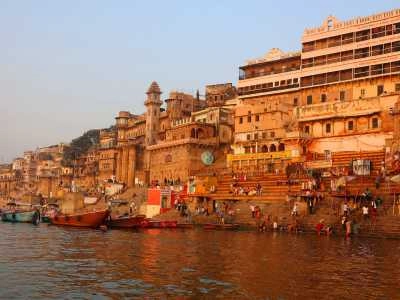
A journey to Varanasi, one of the oldest continuously inhabited cities in the world, is an immersion into India’s spiritual essence. Situated on the banks of the holy River Ganges, this sacred city embodies the eternal cycle of life and death. It’s rightly called the spiritual heart of India and stands among the must-see things in India for travelers seeking meaning beyond monuments.
Walking along Varanasi’s 88 ghats, each with its own ritual significance, offers a deeply moving experience. The most iconic is Dashashwamedh Ghat, where the mesmerizing Ganga Aarti takes place every evening, priests dressed in saffron robes perform synchronized prayers with fire lamps and chants, as thousands watch diyas (lamps) float downstream under the twilight sky.
Wake up early to take a sunrise boat ride on the Ganges, where you’ll witness life unfolding, pilgrims bathing, priests performing morning rituals, and the city awakening to temple bells. Visit the Kashi Vishwanath Temple, dedicated to Lord Shiva, one of the 12 Jyotirlingas of India, and stroll through narrow lanes bustling with silk shops, sweet vendors, and age-old music traditions.
Best time to visit: October – March (pleasant weather and major festivals like Dev Deepawali)
Aarti timings: Morning Aarti at 5:00 AM; Evening Aarti at 6:45 PM (timings may vary by season)
How to reach: Lal Bahadur Shastri International Airport (VNS) connects to Delhi, Mumbai, and other cities. The Varanasi Junction railway station is well linked by rail. Auto-rickshaws and cycle rickshaws are ideal for local travel.
Interesting insight: It is said that a dip in the Ganges at Varanasi washes away all sins, and those who die here attain moksha, liberation from the cycle of rebirth. The city’s history dates back over 3,000 years and is mentioned in the Rigveda itself.

For wildlife enthusiasts, a safari in Ranthambore National Park is one of the most exhilarating things to do in India. Located near Sawai Madhopur in Rajasthan, Ranthambore was once a royal hunting ground of the Maharajas and today stands as one of India’s most famous tiger reserves.
Spread across 1,334 square kilometers, the park’s rugged terrain of dry deciduous forest, lakes, and ancient ruins provides a dramatic backdrop for spotting the majestic Royal Bengal Tiger in its natural habitat. Apart from tigers, the park is home to leopards, sloth bears, deer, crocodiles, and over 300 bird species; making it a paradise for photographers and nature lovers.
A highlight of the park is the 10th-century Ranthambore Fort, perched atop a hill inside the reserve. The fort’s vantage points offer sweeping views of the surrounding wilderness and glimpses of langurs and peacocks along the way. Jeep safaris run twice daily, and the thrill of spotting a tiger prowling through the forest is an experience that stays with you forever.
Best time to visit: October – June (peak sightings between March and May)
Safari timings:
How to reach: The nearest railway station is Sawai Madhopur (11 km), well connected to Delhi, Jaipur, and Mumbai. The closest airport is Jaipur International Airport (180 km).
Safari booking: Safaris must be pre-booked through the Rajasthan Forest Department website or authorized tour operators.
Interesting insight: Each tiger in Ranthambore has a name and lineage known to guides; from the legendary Machli, known as the “Queen of Ranthambore,” to her descendants who still roam the park’s zones today.

Known as the “City of Dreams”, Mumbai is where India’s heart beats to the rhythm of cinema, sea, and ceaseless ambition. The city is a melting pot of contrasts, towering skyscrapers beside colonial relics, luxurious boutiques beside bustling bazaars, and film stars brushing shoulders with everyday dreamers. For those looking for fun things to do in India, exploring Bollywood’s world of glamour in Mumbai is an experience like no other.
Start your day at the Gateway of India, overlooking the Arabian Sea, and then stroll along Marine Drive, fondly called the “Queen’s Necklace,” for its glittering curve of lights at night. Don’t miss a visit to Film City in Goregaon, where you can take a Bollywood studio tour, watch live shoots, learn about set design, and maybe even witness a dance rehearsal in progress.
Explore Mumbai’s cultural treasures like Chhatrapati Shivaji Maharaj Terminus, Kala Ghoda Art District, and Bandra’s street art trails that reflect the city’s creative pulse. As dusk falls, head to Juhu Beach or the Colaba Causeway, where the aroma of street food, vada pav, pav bhaji, and bhel puri fills the air.
Best time to visit: November – February (pleasant coastal weather and festival season)
Recommended timings: Morning and evening hours are ideal for outdoor exploration; studio tours typically run between 10:00 AM and 5:00 PM.
How to reach: Chhatrapati Shivaji Maharaj International Airport (BOM) is one of India’s busiest and connects to all major global and domestic cities. The city is also a major railway hub, with well-connected suburban lines and long-distance trains.
Interesting insight: Bollywood produces over 1,000 films every year, making Mumbai the largest film industry hub in the world, even bigger than Hollywood in terms of output! If you visit during a film premiere week, you might just spot a celebrity at one of the Bandra or Juhu cafés.

No journey through India is truly complete without immersing yourself in its vibrant festivals, each a celebration of life, faith, and color. Attending one is undoubtedly among the top 10 things to do in India, giving travelers an authentic experience of the country’s soul. Every festival, big or small, tells a story that blends mythology, community spirit, and age-old traditions.
In March, join locals in celebrating Holi, the festival of colors, where people joyfully throw gulal (powdered colors), dance to dhol beats, and share sweets like gujiya. During October or November, India lights up for Diwali, the festival of lights, when homes and streets glow with diyas and fireworks illuminate the night sky.
Travel to Pushkar in Rajasthan for the Camel Fair, where desert life comes alive with folk performances, handicraft stalls, and thousands of decorated camels parading across golden sands. Or witness the grand Durga Puja in Kolkata, Onam in Kerala, and Pongal in Tamil Nadu, each reflecting regional pride and devotion.
Best time to visit:
How to experience festivals: Many travel companies offer festival-themed tours in India, which include guided experiences, local stays, and safe participation in public festivities.
Interesting insight: India celebrates over 2 million festivals every year, a testament to its cultural diversity. No matter which month you visit, you’re bound to witness a festival somewhere in the country!
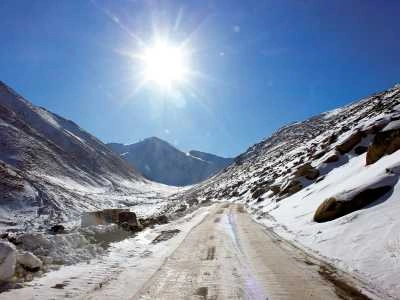
Tucked away in the northernmost reaches of India, Ladakh is a realm of raw, untouched beauty; where towering mountains meet crystal-blue skies and ancient monasteries whisper tales of time. Known as the “Land of High Passes”, it’s one of India’s top places to see for adventure lovers, bikers, and spiritual seekers alike.
Embark on an unforgettable journey along the Manali-Leh Highway or Srinagar-Leh route, where every turn reveals dramatic landscapes, from barren valleys to shimmering lakes. Explore Leh Palace, Shanti Stupa, and Hemis Monastery, one of the largest in Ladakh. For thrill-seekers, riding through Khardung La Pass (one of the world’s highest motorable roads at 17,982 ft) is a bucket-list experience.
Spend nights camping beside the mesmerizing Pangong Tso and Tso Moriri Lakes, where the colors of the water shift from turquoise to deep blue under the Himalayan sun. The region’s serene atmosphere and Buddhist culture offer a sense of peace that contrasts beautifully with its rugged terrain.
Best time to visit: May – September (roads are open and weather is pleasant)
Ideal visiting hours: Early mornings and late afternoons are best for sightseeing and photography due to the stunning light conditions.
How to reach:
Permits: Indian and foreign nationals need Inner Line Permits to visit restricted areas like Nubra Valley, Pangong Lake, and Tso Moriri.
Interesting insight: Ladakh has one of the world’s highest human settlements; Kibber village; and hosts the famous Hemis Festival, where masked monks perform the mystic “Cham Dance” celebrating the victory of good over evil.
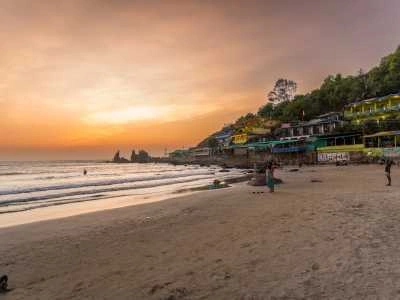
When it comes to relaxation, sunshine, and fun, few places in India rival the charm of Goa. Known for its golden beaches, vibrant nightlife, and laid-back vibe, Goa effortlessly combines the best of India’s coastal beauty with a touch of Portuguese heritage. Whether you’re looking to party under the stars or unwind with yoga by the sea, this tropical paradise has something for everyone.
The North Goa beaches, such as Baga, Calangute, and Anjuna, are known for their beach shacks, live music, and water sports. Jet-skiing, parasailing, and banana boat rides are perfect for thrill-seekers, while evenings come alive with bustling night markets and open-air clubs like Tito’s and Café Mambo.
If you prefer serenity, head to South Goa, where Palolem, Agonda, and Colva offer peaceful stretches of sand, boutique resorts, and yoga retreats. Don’t miss the historic Basilica of Bom Jesus in Old Goa, a UNESCO World Heritage Site, or the scenic Dudhsagar Waterfalls, cascading down through lush forests.
Goa is also a haven for food lovers, from beachside seafood grills to cozy cafés serving Goan curries, feni cocktails, and fusion cuisine. Watching the sun dip below the Arabian Sea with a plate of prawns and a chilled drink is one of those simple pleasures that defines a Goan holiday.
Best time to visit: November – February (pleasant weather and festive season)
Beach timings: Open all day, but mornings and evenings are best for swimming and sunset views
How to reach:
India is not just a destination, it’s a journey of discovery that unfolds with every step. From the timeless romance of the Taj Mahal to the tranquil backwaters of Kerala, from the spiritual calm of Varanasi to the thrill of a Himalayan trek, the country offers experiences that speak to every kind of traveler.
Whether you crave adventure, peace, culture, or connection, these 10 unforgettable things to see and do in India showcase the nation’s unmatched diversity and timeless allure.
So, in 2026, embark on a journey across this magical land, where every sunrise feels new, every smile feels familiar, and every moment becomes a memory that lasts a lifetime.
Summer in India is a time when most parts of the country experience rising temperatures, but it also opens the door to some of the...
India is a land of incredible diversity, geographically, culturally, and climatically. From the snow-covered Himalayas to sun-kissed beaches, dense jungles, and royal deserts, every region...
South India, comprising Kerala, Tamil Nadu, Karnataka, Andhra Pradesh, Telangana, and the union territories of Puducherry and Lakshadweep, offers a remarkable diversity of landscapes and...
You are one step closer to having the best journey of your lifetime! Talk to us, write to us all that you have envisioned for your India trip, and one of our travel experts will connect with you on priority. To help you explicitly we have WhatsApp and Email addresses!